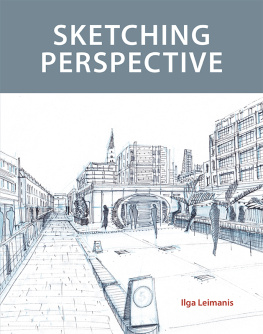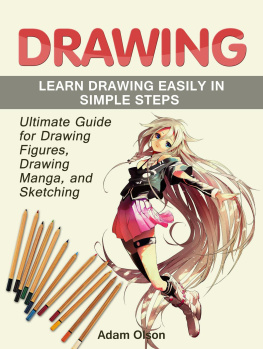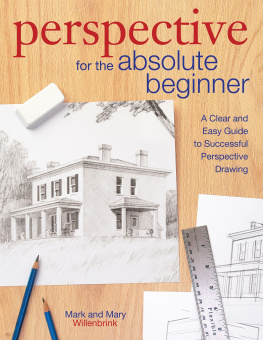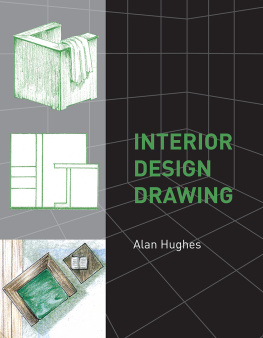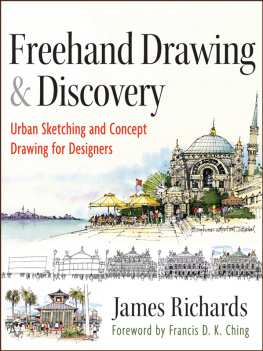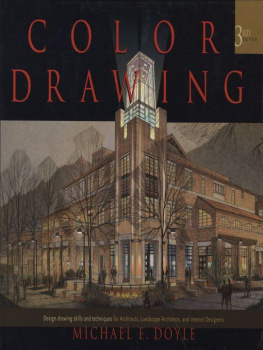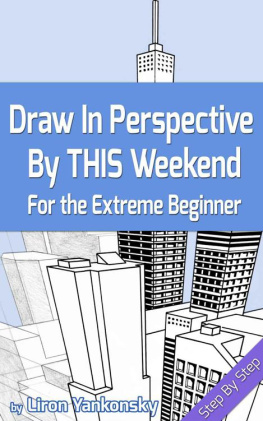Page List
Sketching Perspective
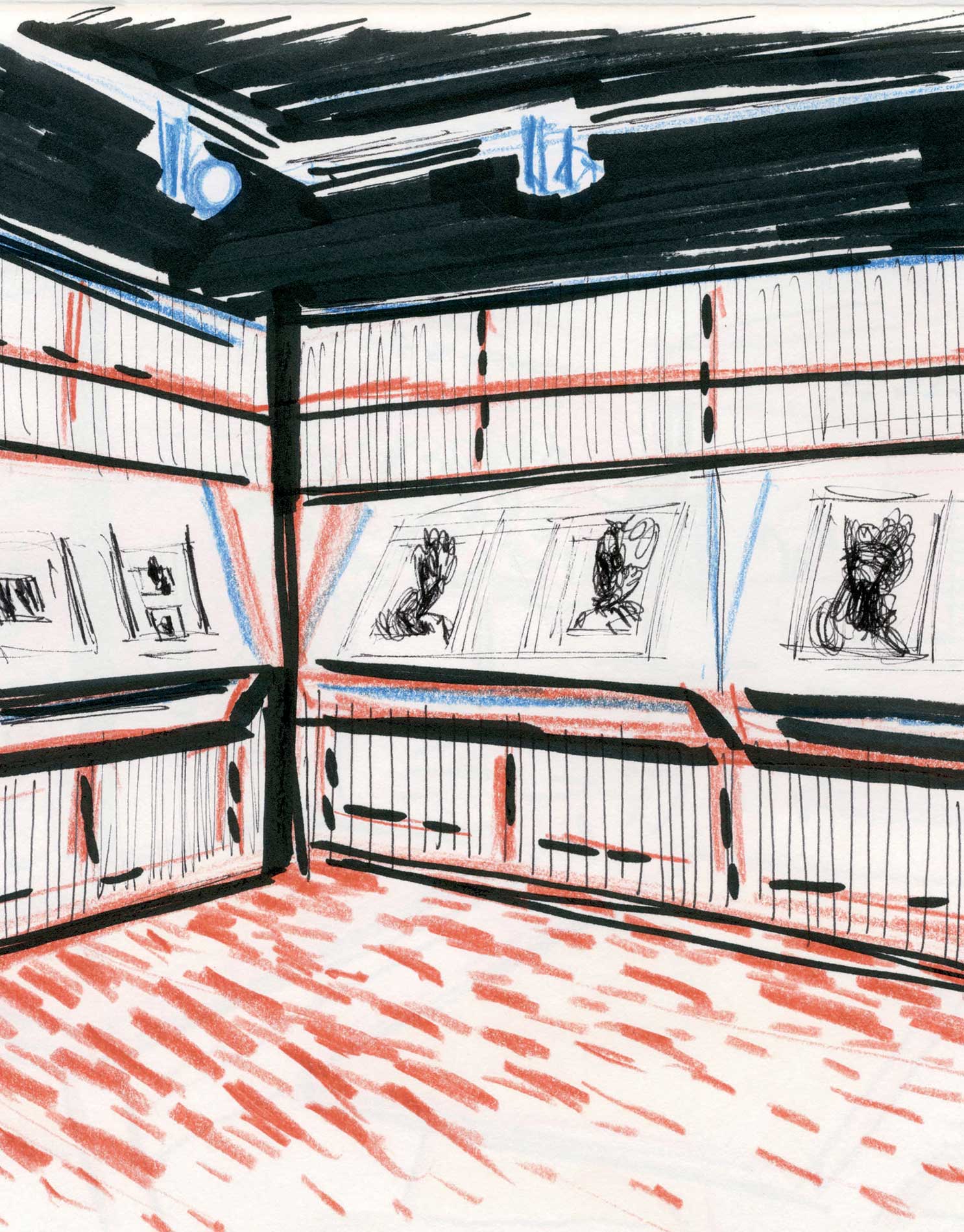
The Prints and Drawings Gallery at the British Museum, one of my favourite places in London for inspiration. Two coloured pencils and two black markers of different line weights were used to draw this sketch.
Sketching Perspective
Ilga Leimanis

First published in 2021 by
The Crowood Press Ltd
Ramsbury, Marlborough
Wiltshire SN8 2HR
www.crowood.com
This e-book first published in 2021
Ilga Leimanis 2021
All rights reserved. This e-book is copyright material and must not be copied, reproduced, transferred, distributed, leased, licensed or publicly performed or used in any way except as specifically permitted in writing by the publishers, as allowed under the terms and conditions under which it was purchased or as strictly permitted by applicable copyright law. Any unauthorised distribution or use of this text may be a direct infringement of the authors and publishers rights, and those responsible may be liable in law accordingly.
British Library Cataloguing-in-Publication Data
A catalogue record for this book is available from the British Library.
ISBN 978 1 78500 881 8
Cover design: Peggy & Co. Design
For my sister Andra
Acknowledgements
Thank you to the Crowood Press for commissioning this book. I had kept all my teaching materials and notes after each class I taught, thinking this material would come in handy one day and I appreciate the opportunity to develop it into a book. I also acknowledge the support of my family and friends, near and far, and to my many students over the years who have taught me so much.
Introduction
T his book will help you to draw any space you find yourself in. My focus throughout is on developing an understanding of how to translate what you see in front of you onto the page as quickly as possible. I always say that with enough time, it is possible to finesse your way into a good drawing, but the real test of skill comes from being able to do it quickly and repeatedly. In addition to your eyes, the methods covered in this book will show you how to use your hands and arms, in various ways, to bring the three-dimensional world flat onto the two-dimensional paper surface.
My aim with this book is to teach you these methods, first to gain an understanding and then to develop your skills in observational freehand perspective drawing. Once the observational basics are solidly within your grasp, then you will be free not to think about it anymore and to play and be creative with each image you produce. I often compare learning to draw with learning a new language: practice makes perfect and at a certain point you no longer think about grammar and vocabulary, you just fluently speak and write.
Considering we always find ourselves somewhere in relation to a space, whether we are inside a room, outside on a city street, high above looking down, in a forest or field, this book is relevant to anyone, in any situation. You could be a sketcher on holiday or recording a new city or experience, a design professional looking for a process to help you communicate a landscape, architecture, film or interior design. This book can also be used by visual artists who want to understand drawing in order to create better paintings, drawings or installations.
I have been teaching drawing skills for nearly fifteen years to students, many of them beginners. It has been fun developing exercises for my students to learn effectively, and having taught for so many years, my own instruction has become more succinct and economical; I can see the results and know when my words have made a connection and when they have not been understood. It gives me great joy when a student has grasped the basics and has the confidence to develop further.
Following one of my workshops on freehand perspective drawing, a student approached me, saying that when she compared herself with others on her course, she did not think her drawings were good; she had come to believe that she was not talented. She realized during my workshop that it was simply the skill of freehand perspective drawing that she lacked, and this had impacted on everything, leaving her lacking in confidence. This is a familiar story, but issues can be resolved by learning and practising the basics, which are covered in detail here in this book.
Over the years, I have carried out much research in order to answer my students questions. Perspective was something I worked on organically, understanding and developing a method which worked for me, based on the skills I was using in other types of drawing. I used an intuitive approach for faster results.
When I am teaching, in addition to words, I also use quick sketches to demonstrate a concept, drawing right there on the spot in front of the group or the student. Most of the images in this book are made directly and quickly from observation or redrawn using these as a starting point. Many have been made whilst teaching, showing and explaining concepts to students. I usually demonstrate by drawing as that is often the quickest way to explain. I kept these sketches, hoping that one day I would have the opportunity to share them.
Other images in this book have been drawn on location. Since 2007 I have led an informal urban sketching group, Drawn in London; we meet in a chosen spot and draw for a couple of hours. One of my reasons for starting the group was to motivate myself to draw more. I set up the structure, chose a date and time, invited people on my mailing list friends, former students and acquaintances and then I was forced to go and draw, even if I did not want to, and I now have many sketchbooks full of drawings. Another benefit was that I came to know London better. I had recently moved, and I used these drawing dates to discover parts of this large, unfamiliar and seemingly overwhelming city and to expand my knowledge. Usually at the end of a drawing date, the group would gather and look at each others drawings it was not really a class as such, but the sharing aspect made it really engaging. Beginners could learn from more experienced drawers, and materials were discussed and shared. I learned a lot during these sessions.
Most of the images in this book come from these drawing sessions. They are made in the moment, with all their imperfections, working through the problems presented. There is an energy in that direct moment, and I hope that the rawness of the material serves to inspire: you can do it too. Most of these images have not been reworked or finished properly. These direct sketches are the reason why drawing is so captivating for me. It presents the right combination of a challenge (to see if you can get it right) and a pleasure: being there in the moment, a meditation of sorts, focused and engaged with the scene in front of you.
Only a couple of images in this book are what I would consider proper, finished drawings. By this I mean work that has been carefully considered or reworked from an original sketch. These would be exhibition-ready works made in the studio.
My background is in fine arts. I always loved art and I remember drawing as a child. I took Art as a subject in secondary school and continued my studies at Dawson College and the Universit du Qubec Montral, Canada, before moving to Riga to finish my degree in painting at the Art Academy of Latvia. It was in Latvia that I realized I was not skilled in observational drawing and took extra private lessons with a master drawer, Kristaps elzis. Learning the academic, traditional way of drawing was much harder than I had anticipated, and I was surprised at how mechanical it was: there was a definite right and wrong, whereas I was always seeing things in terms of variables and in betweens. I remember the lessons I learned and have always strived to make this technical part of drawing as interesting as possible for my students.

